Below you will find the biographies of six brave Nebraskans who served as Tuskegee Airmen During WWII.
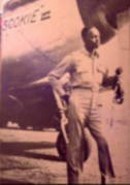
Alfonza W. Davis – Omaha, NE
Captain Alfonza W. Davis was born in Omaha, Nebraska on 23 September 1919. He graduated Valedictorian at Technical High in March 1937 and won the First Annual University Scholarship awarded by Alpha Eta chapter of Kappa Alpha Psi National Negro College Fraternity. He attended Omaha University (now University of Nebraska at Omaha).
Davis joined the Army Air Corps in 1942.
From July 1942 to March 1943, he was an aviation cadet at Tuskegee Airfield, Alabama, specifically established to train the first black military aviators. Graduating at the top of his flight class, he became the first black military aviator from Omaha to receive his wings from Tuskegee Field. Captain Davis distinguished himself by receiving a medal for the highest rating in Moving Target Marksmanship in his class, and was chosen squadron leader.
Upon graduation, he was assigned to the 302d Fighter Squadron in Italy. Later he was attached to the Group Headquarters of the 332d Fighter Group as the Assistant Group Operations Officer. The group operated with the Fifteenth AF from May 1944 to Apri1 1945, being engaged primarily in protecting bombers that struck such objectives as oil refineries, factories, airfields and marshalling yards in Italy, France, Germany, Poland, Czechoslovakia, Austria, Hungary, Yugoslavia, Romania, Bulgaria, and Greece. The group also made strafing attacks on airdromes, railroads, highways, bridges, river traffic, troop concentrations, radar facilities, power stations, and other targets.
His final assignment was with the 99th Pursuit Squadron as Squadron Commander. Flying a P-51 “Mustang,” his missions included reconnaissance and strategic flights, but mostly flew escorts for the large bomber squadrons stationed in Italy. During one of the missions, the P-51 “Mustang” fighter group he commanded destroyed 83 German aircraft. His final mission occurred 29 October 1944 while on a special high-reconnaissance mission to Munich, Germany. About 12 miles west of Salvatore Point, near the Gulf of Trieste, he was lost in overcast weather, never to be seen or heard from again. The War Department later issued a presumptive finding of death while missing in action on 30 October 1945.
Captain Davis’ awards and decorations included: Purple Heart, Distinguished Flying Cross, and Distinguished Unit Citation. He was also credited with one aerial victory in the Mediterranean Theater of Operations on 16 July 1944.
Captain Davis is survived by his widow, Mrs Berdyne Davis-Scott, who presently resides in Washington, D. C., and his brother, Mr. William L. Davis, who resides in Los Angeles, California.
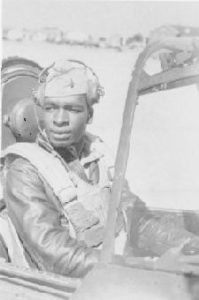
LTC (Ret) Paul Adams – Lincoln, NE
Dreaming of being a pilot since childhood, Paul Adams entered Tuskegee Air Base in Alabama in 1942. This dream was made possible because in 1940, the U.S. War Department asked the training unit to establish an experimental program to prove that blacks could become good pilots and flight instructors.
As a cadet in 1942, Paul Adams began fighter pilot training, and he received his commission as a Second Lieutenant in 1943, class 43-D, assigned to fly the P-40 Warthog in the 332nd fighter group. Upon arrival to Italy with the 332nd Fighter Group, 2LT Adams was reassigned to fly the P-39 Belaire Cobra to patrol the Naples Harbor.
During World War II, the Tuskegee Airmen participated, as members of the four squadron 332nd Fighter group, in more than 1500 missions in Europe and North Africa, losing only 98 pilots, the only unit to obtain such distinction.
In 1945, CPT Adams returned the US and was discharged from the Army Air Corps. In 1946, Mr. Adams married Alda Thompson, and thus reentered the Army as ILT Adams to attend Supply School. After assignments to Lockborne AFB in Columbus, Ohio, as the supply officer, and Travis AFB as the Fleet Service Officer, the Army Air Corps became the US Air Force, and racial integration began.
Other assignments included: Hickam field AFB in Honolulu, HI, in Headquarters Pacific Air Division; instructor at Howard University, Washington, DC; Denver, CO for Photo Interpretation School; Westover, MA, with dual responsibilities as Supply and Intelligence Officer; Goose Bay, Newfoundland as an Intelligence Officer; and finally as Deputy Base Commander at Lincoln, NE.
After three children, Deloris, Gloria, and Michael, and obtaining the rank of Lieutenant Colonel in the Air Force, and 20 years of service, LTC Paul Adams retired in December 1963. During his service, LTC Adams served in nine major campaigns and received the Commendation Medal with three Oak Leaf Clusters.
After retiring from the Air Force, LTC Adams joined the teaching staff at Lincoln High School as an industrial Arts teacher in 1964. He was one of Lincoln’s first three African American teachers. He continued to teach until 1982 and retired.
Since then, LTC Adams is a member of Capital City Kiwanis, served as past president of the Lincoln NAACP, served as an officer with the Retired Officers Association, organized a Builders Club at East High School, and served as a Kiwanis Grandpa at Elliott School. LTC Adams remains active in the Masons and in his church.
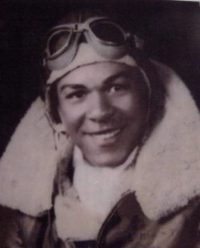
LTC (Ret) Charles A. Lane, Jr. – Omaha, NE
Lt Colonel Lane (Ret) was born on June 2, 1925 in St. Louis Missouri. He attended Harriett Beecher Stowe Teachers College, But studies were interrupted in 1943 when he entered the Cadet Corps at Tuskegee Institute, Tuskegee, Alabama.
He graduated from Tuskegee flying program as a fighter pilot in 1944 and joined the Army Air Corps 99th Pursuit Squadron in Italy in one of the three Black aviation units to see combat during W.W.II. He flew 26 combat missions, flying P51 fighters escorting B-17 and B-24 bomber aircraft.
Lt Colonel Lane dedicated 27 years of service to the US Air Force flying fighters, transports, and the B-52. His primary duty during this period was as a Communications-Electronics Staff Officer. His last tour was at Strategic Air Command. He Retired from the US Air Force September 1, 1970.
In civilian life he became a staff member of the Omaha based poverty program, Greater Omaha Community Action (G.O.C.A). He directed and managed this program from 1970 through his retirement in 1992. Throughout his tenure G.O.C.A. had 22 50 58 active programs dealing with the poverty aspects of children, aging, handicapped, alcoholism, and mental health, to name only a few.
He is a member of Tuskegee Airmen Inc. (TAI) and is currently a board representative of the local chapter to the TAI national board of directors.
Since his retirement he has become affiliated with the Civil Air Patrol (CAP), and is currently serving as the CAP Squadron Commander. This unit serves predominantly the North Omaha area.
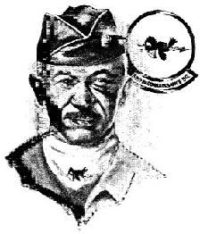
LTC (Ret) Harrison “Harry” Tull – Omaha, NE
From Woodbury, New Jersey, Harrison Tull was drafted into a segregated Army Air Corps in July, 1943, to begin a 27-year career. When he entered the military, most opportunities for black officers were limited. While attending basic training at Keesler Air Force Base, Biloxi, Mississippi, Tull was accepted to the Aviation Cadet Program at Tuskegee, Alabama. Assigned to the Aerial Bombardment School at Midland, Texas, he received his rated observer wings on November 4, 1944, and was commissioned as a second lieutenant. Tull’s first operational assignment was with the prestigious 477th Bombardment Group (medium) to fly in the B-25. He still recalls with pride being selected for this elite unit.
In 1945, as World War II was winding down, Tull was released from this unit and eventually was stationed at Selma Army Air Field, Louisiana, for navigation training. In November of that year, Tull was released from active duty for being among a group of black officers who went into a restricted all-white Officer’s Club.
Remaining in the military reserves for the next seven years, Tull would again serve his nation as he was recalled to active duty for the Korean War. He was assigned as a navigation instructor at Ellington Air Force Base, Texas, even though he had never completed formal navigation training. In 1953, he was transferred to Randolph Air Force Base, Texas, for B-29 crew training with further assignment to the 90th Strategic Reconnaissance Wing (SRW), Forbes Air Force Base, Kansas.
Since desegregation was still a new idea in the armed forces at this time, assigning a black officer to an air crew required a vote of acceptance by the rest of the members. Tull was accepted unanimously, and in August of that year his crew was assigned to Yokota Air Base, Japan, with the 98th Bombardment Wing, flying Korean post-war support missions. As the conflict cooled down and the Cold War heated up, the need for information about the Soviet Union became critical to the defense of our nation.
In 1954, Tull finally attended navigation training and received his first promotion in 11 years, to the rank of first lieutenant. After graduation, he went on to attend the Advanced Observer Electronic Countermeasures Course and entered the emerging career field of electronic warfare. Returning to Forbes in February 1956, he served as an electronic warfare officer in the 55 SRW where he spent the next 14 years making an unprecedented impact in the field of electronic warfare. He would serve as an equipment operator, instructor and evaluator.
In 1965, the 55th began receiving the RC-135C, ushering in a new era in electronic reconnaissance with a greatly improved ability to collect and exploit signals. At Offutt, Tull was assigned to the 55th Electronic Intelligence Operations Squadron. He commanded this squadron until his retirement on April 1, 1970.
Lieutenant Colonel Tull played a critical role in the Air Force by paving the way for black airmen in the Air Force. His dedication and devotion to duty as a pioneer reconnaissance EWO led to technological breakthroughs in the field of electronic reconnaissance and the electronic warfare officer career field. Today “Crows” stand on the shoulders of Harry Tull who never succumbed to adversity, who never bemoaned his fate, and who always triumphed through superior performance.
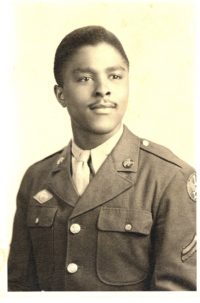
Cpl. Robert D. Holts – Omaha, NE
This is Mr. Holts’ account of his time serving in the U.S. Army and being a Tuskegee Airman:
“On November 21, 1942, I enlisted in the United States Army Air Corps, along with five very close friends. We were all still high school students, none of us beyond 18 years of age. There was Joe Carter, (who subsequently became an Air Crew member of the 477th Bombardment Group and an original member of the Tuskegee Airmen); Lincoln Spencer, Robert Goodwin, Leonard Covington, and J. C. Jackson. They are all now deceased except for Leonard.”
Having been sworn in to the service at Fort Crook, Nebraska (now Offutt Air Force Base), we proceeded at once by train to Fort Leavenworth, Kansas; where our uniforms were issued, and where the Army General Classification Testing (A.G.C.T.) was done. Recruits scoring over 110 on the A.G.C.T. tests were qualified for further testing for Officer Candidate School (O.C.S.) or to take the qualifying test for Aviation Cadet Training (A.C.T.). We were not aware of any of those possibilities, and were not told about them.”
“While at Fort Leavenworth for those few days, I began to notice that there were no white recruits in our barracks, but I just dismissed the observation as of no consequence. However, the following week, when we arrived at Jefferson Barracks, Missouri, near St. Louis, where our Basic Training was to begin, I was astounded at what I was observing; I had never seen so many Negroes (Blacks, Colored People), concentrated in one place before! And that’s not all. These people were all recruits, Buck Privates, and not an Officer or Black Non-Commissioned Officer on the post that was visible to me! Much later during our thirteen weeks of basic training, I saw a Black Warrant Officer, who was a Chaplain.”
The thirteen weeks of basic training, however, were fun to us because we were so young, and by our being together from childhood, we could handle the drills, obstacle courses, etc., with ease. The Drill Instructors (D.I.), all white, performed much as you can imagine when marching and drilling us. The only hard part was having to endure the cold weather (December) while being outside for long hours at a time. There were times when Leonard or Robert (clowns at heart), would step out of ranks while we were drilling, and would mockingly prance around right behind an unknowing drill instructor, and flow back into the ranks, unobserved. Or they would teasingly respond orally to some kind of statement by the D.I., mocking his syntax without the D.I. being any the wiser. Such impromptu hilarity helped relieve the monotony of the day.”
“The time came for our being separated, in order to pursue our military occupational specialties. Joe and Leonard went to Maryland to an airbase for Auto Mechanics; Lincoln, Robert Goodwin and J.C. went to California to separate engineer outfits. All were overseas in the Pacific Theater by September 1943.”
I was sent to Franklin Technical Institute, in Boston, Massachusetts and was enrolled in an intensive engineering drafting course in January of 1943. We were in class eight hours a day studying drafting and surveying. The surveying in the winter of 1943 in Boston was tough, but I was learning that this was activity to be expected in the Military. We were billeted or housed in a suburb of Boston, in a big stone house near Boston College, a place called Chestnut Hill, Massachusetts. It was more like being in college, because we were not on a military post, but just minutes away from downtown Boston. The white soldiers in our class at Franklin Technical Institute were envious of our housing, because they were housed in quarters in downtown Boston more like barracks. I liked our quarters the best, certainly. Our group leader or class leader where we lived, John Adams, subsequently became a Tuskegee Airman (a pilot). One other class member also was successful in the Tuskegee Experience, Cletus Bordeaux from St. Louis, and became a pilot.”
“When the drafting course was completed, I was shipped to an Air Base, Langley Field, Virginia; which is of course near Hampton, Virginia. I was assigned to Company “B”, the 428th Signal Construction Battalion, and was re-introduced to a totally segregated army. It appeared that the mission of the 428th was to install telephone poles and lines in combat zones. I don’t know whether that technique was used for the duration of the conflict or not. My drafting duties were very minimal at that time. I was kept occupied by making organizational charts and graphs, small things like that. Some days I did nothing but hang around the orderly room, helping the clerks, or something.”
“From time to time, I would observe the many types of aircraft that would appear overhead and on the base. It became challenging to me to identify them visually or by sound.”
“It was now mid-summer 1943, time for my first furlough. Still 18 years old, I went home on leave, and was surprised to see Joe Carter there, now 19 years old, wearing wings of an aerial gunner, and involved with the Tuskegee Airmen. Now I knew I was going to take the Aviation Cadet Test.”
“When I returned to the base, I had been promoted to Corporal, and was very interested in flying. I had just learned how to drive a car by driving a jeep on the back roads of the base. One evening I drove a jeep over the Hangar Line, and asked and received permission to ride on a B-24 Liberator Training Flight. The crew, of course was all white, and I didn’t know what my reception would be like; what with the military segregation. They were very friendly, and welcomed me aboard. I could hardly believe it, my first airplane ride and on a B-24, right in the cock pit, with the pilot and co-pilot, looking at the cluster of instruments as they tooled the plane around the sky, over Chesapeake Bay and Virginia. I’ll never forget that experience, especially the touchdown at 120 MPH. The next day I went to Base Headquarters at Langley Field, and took the Aviation Cadet Qualifying Examination and passed it. I was overjoyed!”
“In the meantime I was still with Company “B” 428th Signal Construction Battalion. It was now about November 1943, and we were on maneuvers at Camp Cumberland, Virginia; living outside in the woods, preparing for overseas duty.”
“I was now 19 years old, and my orders came at the end of December for me to report for Pre-aviation Cadet Training at Keesler Field, Mississippi. Two or three other soldiers, Harry Hackett, Ralph Green and Edward Quander, having successfully passed the test, were also enroute to Keesler Field; so we shared a drawing room on the train from Virginia to Mississippi. I can’t remember whether we were allowed to go to the dining car or how that was worked out.”
“Keesler Field meant that in addition to the psychological and psycho motive testing that we had to go through, there was more orientation and basic training to go through. Green and Hackett, both college students, failed and were returned to Langley Field. I followed in April, thoroughly morose and dejected.”
“Back at Langley Field, I learned that the Battalion had left the base and were now probably overseas. In 1945, I heard a rumor that the entire outfit was lost. I have never heard any such verification of that fact.”
“Both Harry Hackett and Ralph Green, although washed out as cadets, applied for Infantry O.C.S. and became 2nd Lieutenants. Hackett, after having been mustered out, moved to Detroit with his wife, went to Law School and became a Federal Bankruptcy Referee or Judge.”
“In July of 1945 I was assigned to Goodman Field, Kentucky; where Colonel Benjamin O. Davis Jr., was now the Base Commander. He had recently returned from overseas duty as the leader and Group Commander of the Tuskegee Airmen, 332nd Fighter Group. I was assigned to the 118th Base Unit, Squadron “D”. My specific duties were with the Base Statistical Control section under the leadership of Lt. William T. Coleman Jr., and Lt. Emmet J. Rice. Our responsibilities included amassing all detailed recurring reports vital to the Operations and Training and Logistics of the activities at the Airbase, and transmitting required information to proper sources on a timely basis.”
“I was stationed there until my discharge in February 1946.”
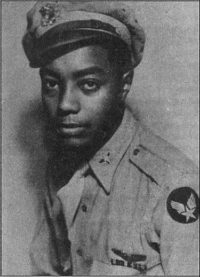
2LT Ralph P. Orduna – Omaha,NE
Excerpts from the Omaha Star Newspaper (May 2003)
Ralph P. Orduna was born in Omaha, Nebraska on August 17, 1920. As a youngster, Orduna was interested in aeronautics and learned all that he could about airplanes. While he was employed at the Martin Bomber Plant in Omaha, he helped to build the B-26, a medium bomber, and later the heavy bomber the B-29. In 1941, with the help of a family friend who was an Army NCO and the tenacity of his father, Orduna was able to break through discrimination and enlist in the Army Air Corps.
After Orduna graduated from the Tuskegee Flying School, he was commissioned as a 2nd Lieutenant and was stationed at Raminelli, Italy with the 301st Fighter Squadron of the 332nd Fighter Group. The 332nd was the Army’s first all Black fighting force.
Orduna flew 18 missions in the P-51 Mustang. He escorted American bombers on missions and also conducted reconnaissance flights over enemy territory. For his efforts he earned the Air Medal with two oak leaf clusters.
After his service to his country, Orduna earned a commercial pilot’s license but was unable to use it due to discriminatory practices of commercial airlines at that time.
Ralph P. Orduna passed away on May 27, 2003. He is now in the memorial ranks of the Tuskegee Airmen “Lone Eagles”.
The Alfonza W. Davis Chapter of Tuskegee Airmen, Inc. (TAI) was chartered on April 23, 1988 as a private organization on Offutt Air Force Base, Nebraska. A request to establish a local TAI chapter in the Omaha-Bellevue area was proposed by Maj (Ret) Bobby C. McGlown, and then assigned to Headquarters Strategic Air Command, Offutt AFB.
After submission of the Chapter’s Constitution and By-Laws, the Chapter was incorporated by the State of Nebraska July 14, 1988 and chartered by TAI national headquarters on September 10, 1988 as a private non-profit 501.3.c organization.